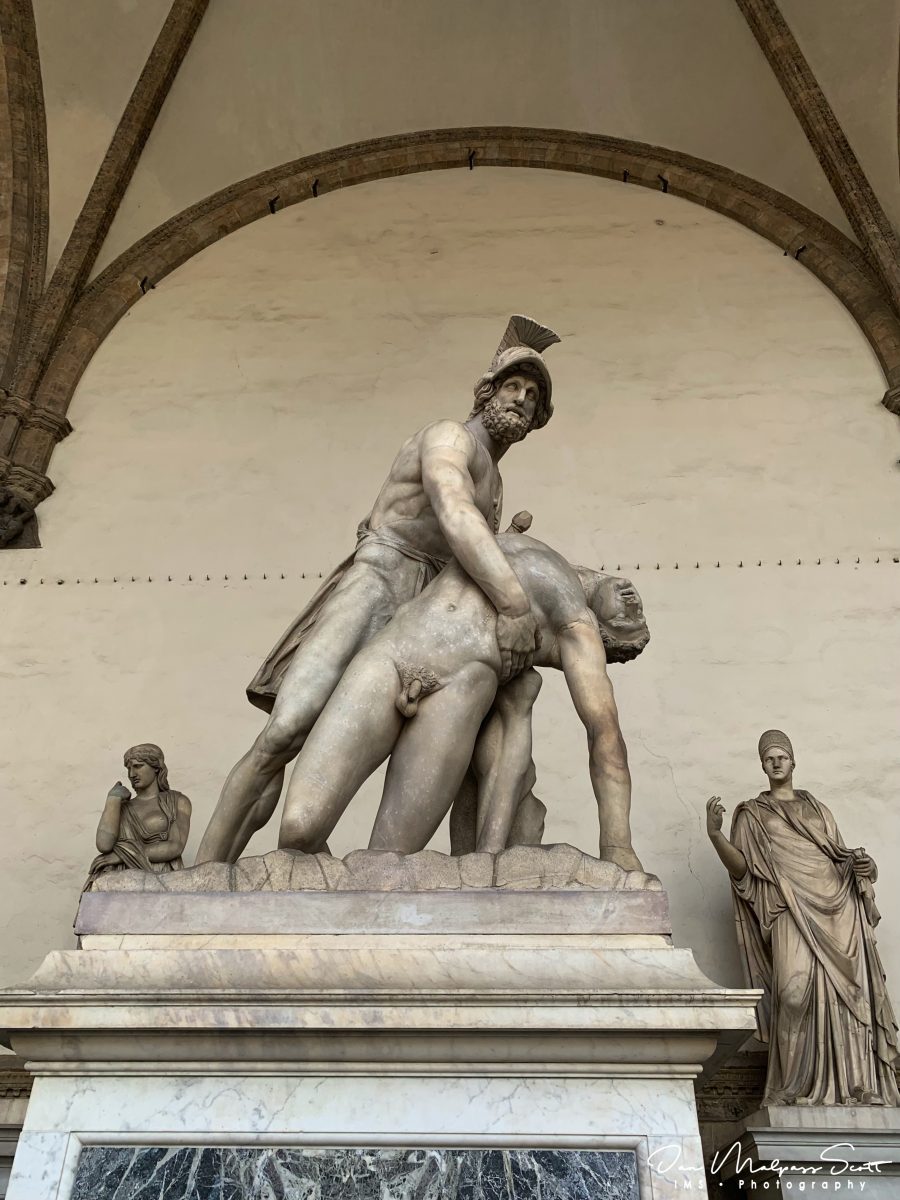![]()
The Pasquino Group (also known as Ajax Carrying the Body of Achilles or Menelaus Carrying the Body of Patroclus) is group of marble sculptures that copy a Hellenistic bronze original, dating to ca. 200–150 BCE. At least fifteen Roman marble copies of this sculpture are known. Many of these marble copies have complex artistic and social histories that illustrate the degree to which improvisatory “restorations” were made to fragments of ancient Roman sculpture during the 16th and 17th centuries, in which contemporary Italian sculptors made original and often arbitrary and destructive additions in an effort to replace lost fragments of the ancient sculptures.
Cosimo I, Grand Duke of Tuscany purchased an ancient marble fragment depicting the headless torso of a man in armor supporting a heroically nude dying comrade soon after it was discovered in the vigna of Antonio Velli, half a Roman mile beyond Porta Portese, Rome. With the consent of Pope Pius V, it was taken immediately to Florence, where it appears in the inventory taken at Cosimo’s death in 1574. The project for completing the truncated torso of the “Ajax” figure, missing above the waist when it was found according to the Memorie (1594) of the sculptor and antiquarian Flaminio Vacca, was commissioned by Ferdinando II; the “restoration” was worked out by Pietro Tacca and executed by Lodovico Salvetti from Tacca’s model, according to Filippo Baldinucci. It was set up in a niche on the south end of the Ponte Vecchio. Paolo Alessandro Maffei’s engraving of 1704 shows that the “Ajax” figure then was wearing a helmet much simpler than the elaborate neoclassical one erroneously provided by Ricci seen on the sculpture today.
In 1771, the neoclassic artist Anton Raphael Mengs took moulds of the parts he considered genuinely ancient (and thus original) of this sculpture and the version at the Palazzo Pitti (discussed below) and reassembled them in a plaster model that was intended to be more faithful to the Roman original. It was taken away to be further repaired in 1798 and remained in obscurity, undergoing further adjustments by Stefano Ricci in the 1830s, until it was finally re-erected in 1838, in the Loggia dei Lanzi in the Piazza della Signoria, Florence. The feature which still draws most attention is the lifeless hanging left arm of the “Achilles” figure, seemingly dislocated, which was in fact part of the Tacca-Salvetti restoration. Other errors in restoration are the lifted left leg of the bearer, the raised right knee of Patroclus, and the mounded ground that serves as a base.
![]()


